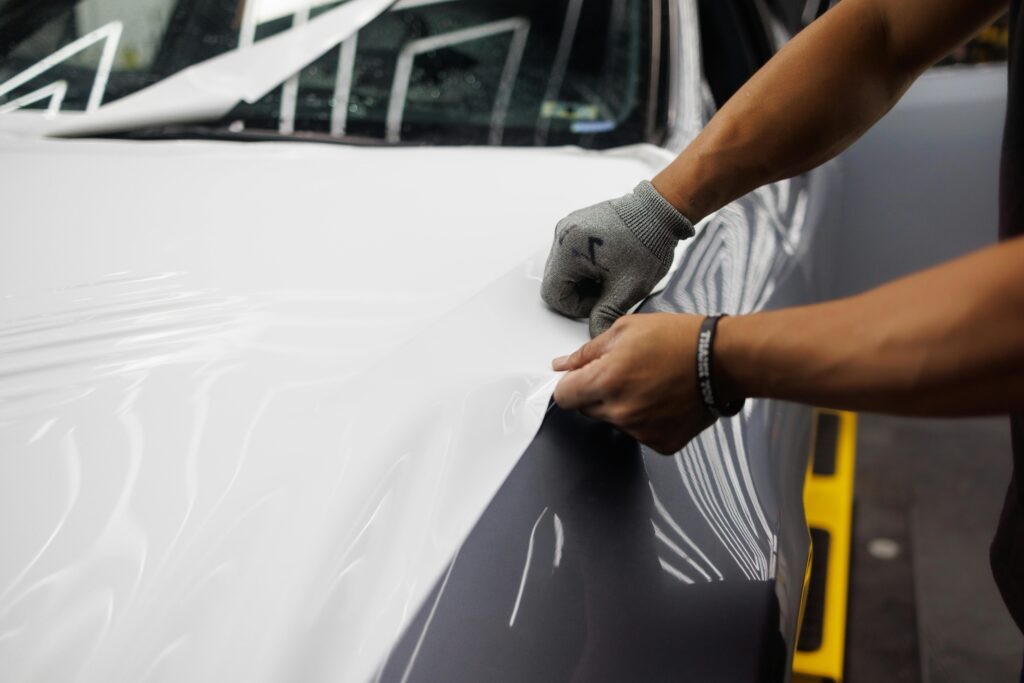As the average new car costs over $47,000, car owners continually seek ways to protect their vehicles and maintain their glossy appearance. Two stand-out solutions are ceramic coatings and paint sealants. However, understanding the differences between these options can be a challenge. Join us as we dive deep into these options, exploring the differences in durability, cost, application process, and protection to help you decide the best choice for your needs.
What are ceramic coatings?
Ceramic coatings are liquid polymers applied to a vehicle’s exterior, creating a chemically bonded, semi-permanent layer. The primary ingredients in ceramic coatings, usually silicon dioxide (SiO2) or titanium dioxide (TiO2), harden into a protective shell over the paint when cured. These coatings prevent corrosion and oxidation on the vehicle’s surface.
Benefits of Ceramic Coatings
Ceramic coatings offer numerous benefits to car owners. Depending on the quality of the coating, they last anywhere from 2 to 5 years, giving drivers peace of mind for a long time. Additionally, the strength of the chemical bond protects paint jobs from oxidation caused by UV rays and can minimize the effects of acidic contaminants like bird droppings and tree sap.
Ceramic coatings possess hydrophobic properties, meaning water and other contaminants roll off the surface easily. This keeps the paint cleaner and reduces the frequency of deep cleaning. Finally, ceramic coatings create a high-gloss finish, giving your vehicle a good-as-new shine.
Drawbacks of Ceramic Coatings
With its numerous advantages come several challenges. Due to the high-quality ingredients, ceramic coatings can be costly, typically ranging from a few hundred to several thousand dollars, depending on the application process. The application process can also be incredibly intensive, necessitating professional expertise.
Ultimately, ceramic coatings are a strong, durable, and protective option for car owners.
What are paint sealants?
Paint sealants are synthetic products that form a protective barrier over the vehicle’s paint. They consist of polymers and synthetic ingredients that bond with the surface, creating a layer of protection that enhances the paint’s shine and safeguards it from environmental contaminants.
Benefits of Paint Sealants
Paint sealants, like traditional car wax, are an affordable way to create a protective coating, making them popular for those seeking protection without a high investment. They are relatively easy to apply and can often be done at home without extensive preparation, though professional application will improve results. Paint sealants also provide reliable protection against UV rays, water spots, and contaminants for 6-12 months.
Drawbacks of Paint Sealants
Though less expensive, paint sealants do not last as long as ceramic coatings, requiring reapplication every 6 to 12 months to maintain protection. They also do not provide the same level of protection or hydrophobic properties.
Key Differences Between Ceramic Coatings and Paint Sealants
Let’s take a look at some of the most important differences between ceramic coatings and paint sealants:
Durability
Ceramic coatings are known for their long-lasting durability, often outlasting paint sealants by several years. For vehicle owners who prefer a more “set it and forget it” approach, ceramic coatings are generally more appealing.
Protection Levels
Ceramic coatings also provide superior protection against environmental hazards. The chemical bond they create with your vehicle’s paint job offers more resistance to UV rays and chemicals. However, paint sealants still provide excellent protection, especially from water spots and minor scratches.
Maintenance Needs
The durability and hydrophobic nature of ceramic coatings reduce the need for frequent washing and detailing. As water beads up on the surface, it carries dirt and debris with it, leaving behind a shiny, clean exterior. With paint sealants, more regular washing and maintenance are needed to keep the paint looking fresh.
Cost Comparison
Ceramic coatings are more expensive than paint sealants. Professional-grade coatings can be a hefty investment, costing anywhere from a few hundred to a few thousand dollars. Paint sealants are far more budget-friendly, often costing under $100 for a high-quality product.
Which Option is Best for Your Needs?
Choosing between ceramic coatings and paint sealants depends on your specific needs, budget, and the level of maintenance you’re willing to commit to. Here are some factors to consider:
-
Budget
If cost is a major consideration, a paint sealant may be the best choice. It offers solid protection at a lower price point, even though you’ll need to reapply it periodically.
-
Time Commitment
Ceramic coatings require professional application and preparation, making them less ideal for those seeking a quick DIY solution. Meanwhile, paint sealants can be swiftly applied in your driveway.
-
Protection Needs
If your car is regularly exposed to harsh conditions, such as extreme heat, humidity, or road salt, ceramic coatings will provide the most protection.
Making the Right Choice for Your Vehicle
Both ceramic coatings and paint sealants offer valuable protection, though their benefits cater to different needs and budgets. Ceramic coatings are ideal for those seeking long-term, low-maintenance protection with high gloss and excellent resistance to environmental damage. Paint sealants are a cost-effective solution for those willing to reapply more frequently.
Whatever choice you make, ceramic coatings and paint sealants add value to your vehicle by maintaining its appearance and protecting it from damage. By choosing the option that aligns with your lifestyle, budget, and maintenance preferences, you can ensure your vehicle looks its best and remains protected for years.
Wraptitude Can Help!
For more details or professional guidance, visit Wraptitude to explore high-quality products and services designed to enhance and protect your vehicle.

